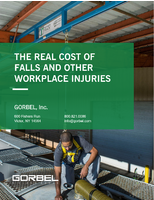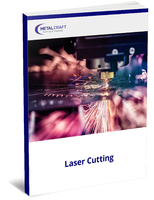Plasan to Produce 1st Composite Accessible Boarding Technologies for Amtrak®
CARBON COMPOSITES HELP MAKE IT EASIER FOR PASSENGERS WITH DISABILITIES, STROLLERS, LUGGAGE TO ENTER/EXIT TRAINS
WIXOM (DETROIT), Mich. - Plasan Carbon Composites (PCC), a leading supplier of carbon fiber-reinforced plastic (CFRP) components for the transportation market, today announced that it has been awarded a contract to produce the first composite ramps and bridgeplates for Amtrak® (National Railway Passenger Corp., Washington). The units, which are part of Amtrak’s Accessible Boarding Technologies (ABT) Program, help make it easier and more accessible for passengers with disabilities, the elderly, as well as those pushing strollers or pulling luggage to embark and disembark from trains, providing as close to independent access as possible at all available railcars along a platform. The initial order of 190 composite ramps and bridgeplates will be deployed at various Amtrak locations and on various railcars followed by further distribution throughout the Amtrak system.
Under the guidance of Gary Talbot, Amtrak program director-ADA, the company currently is in the process of redesigning and rebuilding platforms, station structures, and parking lots at many stations throughout its North American network to ensure they comply with the American’s with Disabilities Act (ADA) of 1990. One area of focus is developing lighter and better designed ABTs - specifically bridgeplates and ramps.
Between any passenger platform and the trains that pass it, a gap is left to provide safe clearance during normal train operations. Gap dimensions (defined as the horizontal and vertical distance between platform and railcar) are designed based on minimum industry standards as well as clearance requirements for the types of trains (passenger, freight, or both) operating adjacent to a platform. Platforms at stations with passengeronly trains typically have smaller gaps than those with shared-use (passenger-plus-freight) trains. Ambulatory passengers are reminded to “mind the gap” and step over the 3.0 to 10-inch/7.6 to 25-centimeter horizontal gap and approximately 3.0-inch/7.6-centimeter vertical gap between train and platform during entry/exit. At some stations, however, gaps between train cars and platforms can be even larger and that can make it difficult for passengers using wheeled mobility devices to span the gap even when a bridgeplate (used for level boarding) or a ramp (used for uneven/bi-level boarding or for shared-use platforms) is installed. Bridgeplates and ramps are typically made of aluminum and can weigh as much as 34 pounds/15 kilograms for a small bridgeplate and 87 pounds/40 kilograms for a short ramp without handrails. Bridgeplates are stored at stations and used at passenger-only platforms, whereas ramps are stored on trains and used on shared-use platforms.
Initially, Amtrak developed its own prototype tooling and units, which were produced by RLE International (Madison Heights, Mich., U.S.A.). The goal was to increase passenger accessibility and to reduce weight so these ABT devices were easier for employees to carry and deploy/remove. Next, Amtrak sought bids from companies thought capable of optimizing the design, as well as molding, assembling, and finishing production units. The plan required the manufacturer to produce assembled CFRP bridgeplates in two styles — Acela1 and Regional — that weighed no more than 20 pounds/9.1 kilograms each and accommodated two different door-opening widths. The plan also called for production and assembly of telescoping ramps with integrated folding handrails in two styles – Superliner (with metal hooks) and Surfliner (with CFRP hooks) - that weighed no more than 55 pounds/25 kilograms each and that accommodated two different attachment methods to trains.
As part of the qualification process, prototype units of both bridgeplates and ramps were required to pass tests including an 800-pound/363-kilogram service-load capacity and a three-times safety factor of 2,400-pounds/1,089-kilograms ultimate strength. Additionally, each item was required to be warranted by the manufacturer against defects and/or premature failure for a service period of not less than 12 months from the date of field deployment into Amtrak revenue service and to include a maintenance contract to inspect and refurbish units that might need repainting or other repairs.
Plasan was the manufacturer chosen to produce the new Amtrak carbon composite bridgeplates and ramps. Amtrak provided technical specifications for the ABT units; Plasan provided technical expertise in carbon composite manufacturing, engineering support, and finite-element analysis to optimize part strength and mass.
As designed, both bridgeplate models consist of five carbon fiber-reinforced epoxy prepreg components with honeycomb and foam cores: a base plate, two fins, and two gussets that are bonded together with a structural epoxy adhesive. Finished telescoping ramps consist of five carbon fiber/epoxy components: upper and lower carriers, a slider section, and two single-piece handrails attached to the upper carrier. Additional hardware allows the handrails to open into position during use and fold back for stowage; stainless grades were used to increase corrosion resistance.
All carbon composite components will be produced via vacuum bag/autoclave cure with additional inflatable bladders used to produce the hollow handrails. After demolding, handrails will be attached to the ramp’s upper carrier via hinges. Next, both bridgeplates and ramps will be painted (either blue or yellow depending on model) and received a scratch- and chip-resistant top coat and decals, as well as a non-slip surface, which will be added to the base. In the event units become damaged during use, Plasan will non-destructively scan them to determine if they can be repaired or need to be replaced; for units requiring minor repairs, CFRP patch kits will be used.
Amtrak® – America’s Railroad®, is dedicated to safe and reliable mobility as the nation’s intercity passenger rail service provider and its high-speed rail operator. With its state and commuter partners, Amtrak moves people, the economy and the nation forward, carrying more than 30-million passengers for each of the past six years. Formally known as the National Railroad Passenger Corp., Amtrak is governed by a 10-member board of directors, nine of whom are appointed by the President of the United States plus the Amtrak CEO. Amtrak operates more than 300 trains daily - at speeds up to 150 miles/hour (241 kilometers/hour) - connecting more than 500 destinations in 46 states, the District of Columbia and three Canadian Provinces. Learn more at Amtrak.com or call 800-USA-RAIL.
Plasan Carbon Composites (PCC) is the leading supplier of carbon fiberreinforced composite components to the North American transportation market, supplying the highest-volume carbon composite-intensive passenger cars in the world. PCC is 80% owned by Plasan SASA - an international leader in ballistic armor and survivability - and 20% owned by Toray Group/Toray Industries Inc. - a multinational conglomerate involved in fiber and textiles (including carbon fiber-reinforced composite materials), plastics and chemicals, information technology (IT)-related products, environment and engineering, life sciences, and other businesses. For more information, see PlasanCarbon.com, or call 1.248.924.3800, or write 47000 Liberty Drive, Wixom, MI 48393 USA.




